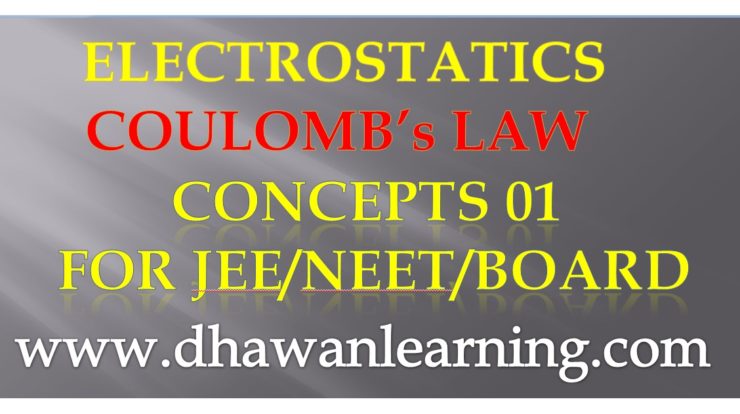
Frictional electricity: carries only historical significance, as it was the 1st electricity observed. In modern physics we know that basically there are 3 particles in an atom, namely electron, proton and neutron. Electron carries +ve charge and proton carries -ve charge and neutron is neutral. Obviously when we rub two materials only electron can be transferred as they are in outer shell. So we have 2 types of charges namely positive & negative. A positively charged body means it has less number of electrons as compared to protons and vice versa for negative charged body.
Charges have some basic properties:
(i) Quantised: charge on any body can be only integral multiple of charge of an electron i.e. q = ± ne where n = 1,2,3, and e is charge on electron -1.6 ×10–19C.
(ii) Conserved: charge can neither be created nor destroyed so algebraic sum of electric charges in an isolated system remains constant for all time. For Isolated system ΔQ = 0
(iii) Charges are also additive in nature algebraically. Q = Σq
One important difference between mass and charge is that charge does not charge with velocity but mass does change with velocity as per Einstein’s formula.


LIKE CHARGES REPEL and OPPOSITE ATTRACT: It is BASIC PROPERTY
Force of interaction between 2 charges is given by Coulomb’s law which states that forces between 2 charges is proportional to the product of the charges and inversely proportional to the square of the distance between them. The force also depends on the medium between the two charges.

- Coulombian (electrostatic) forces are in accordance to Newton’s IIIrd
- Coulombian forces are central forces, act along the line joining the charges.
- Coulomb’s law is not found valid (experimentally) less than 10 –15
where ε0 is defined as the absolute permittivity of free space. Value of e0 is 8.85 ×10–12 C2N–1m–2. This formula is valid for vacuum or free space. For any other medium the formula changes to
where ε is said to be absolute permittivity of medium. Also ε = ε0εr where εr is defined as relative permittivity (also called dielectric constant). It is to be noted εr ≥ 1. For εr = 1 it is free space
</script>

Principle of Superposition: total force on a given charge is vector sum of individual forces exerted on given charge by all the charges
Electric field : is defined as the region around charge where any other charge can experience force due to the said charge. Electrical field strength at a point is defined as force experienced by unit +ve charge placed at that point. Its unit is Newton/Coulomb =
TEST charge should be very small . WHY?
Important question for BOARDS as well as concept
In the above mentioned expression charge q0 is called test charge and its value is very small (limiting to 0) such that it does not alter the main Field. As the test charge is +ve it is to be noted -ve charge will experience force in opposite direction but of same magnitude. If electric field at any point is E = Exi + Eyj + Ezk then its components along x, y & z are Ex, Ey & Ez respectively. For more that 1 charge the principle of superposition is applied (in Vector form)
To find electric field place mentally a +ve 1C charge at that point (E is not defined until this point is specified) & try to find the direction & magnitude of force. This is the value & direction of E at that point
Also if E is existing at any point & we place a charge force experienced is F = qE if q is-ve F is in opposite direction.
Dipole : 2 equal & opposite charges kept at finite distance constitute dipole. The distance is represented as 2a with charge +q and -q. Its strength (so called) is measured in terms of dipole moment vector p = 2aq & direction from -ve charge to +ve charge.
Electric lines of forces: defined as the straight or curved path tangent to which at any point gives the direction of electric field at that point. (+ve charge will experience force in that direction). It comes out radially outward for +ve charge & inwards for -ve charge. Properties of electric lines of force are
1. Are discontinuous curves coming out from +ve & terminating at -ve
2. Tangent at any point gives direction of E
3. No two lines of force can intersect, it gives 2 directions (impossible)
4. Always normal to conductor surface
5. Contract longitudinally due to attraction in unlike charges
6. Exert lateral pressure for repulsion in like
To draw electric lines of forces study the force on unit positive charge at that point and then draw rough sketch, you can see by example

When we join such lines we get

Uniform electric field means that electric lines of forces are parallel and same magnitude in length, technically the E is same in magnitude & direction. While for non-uniform fields E is not same (may change in magnitude or direction) and is usually represented by non-parallel lines of forces.
